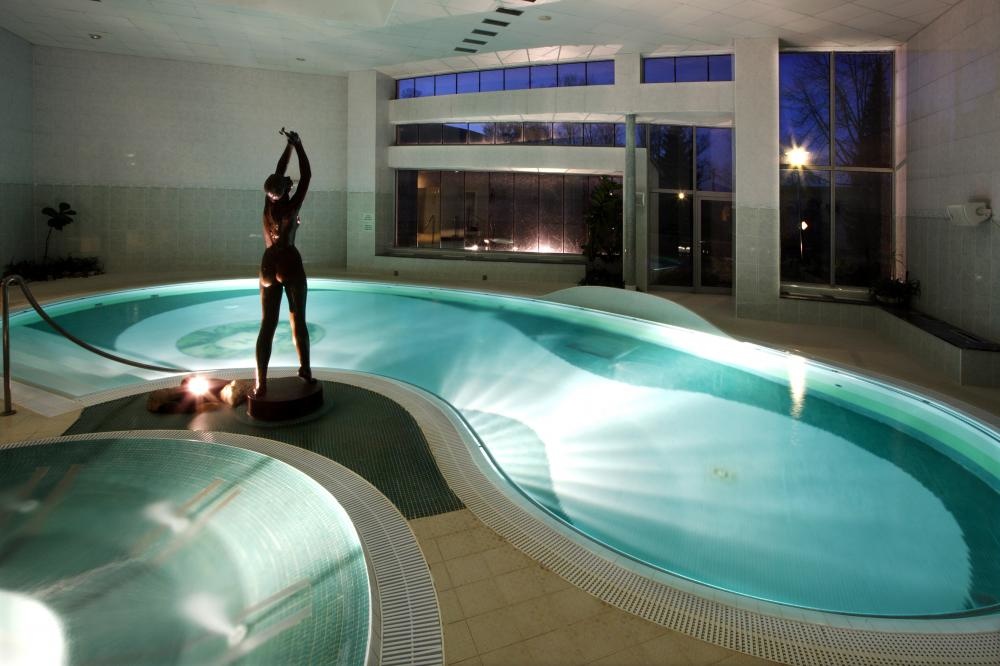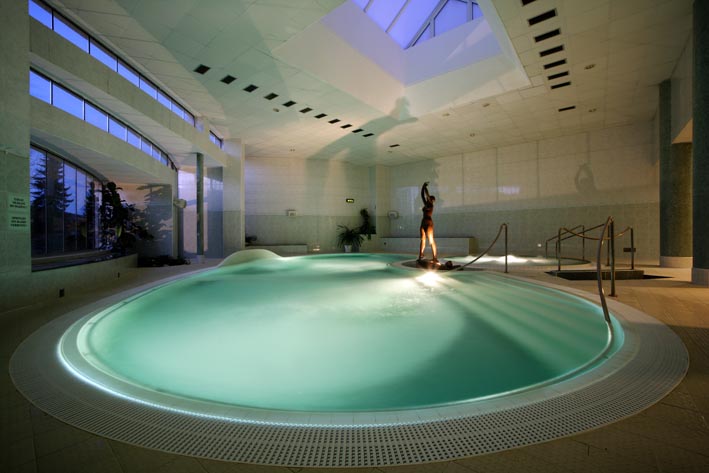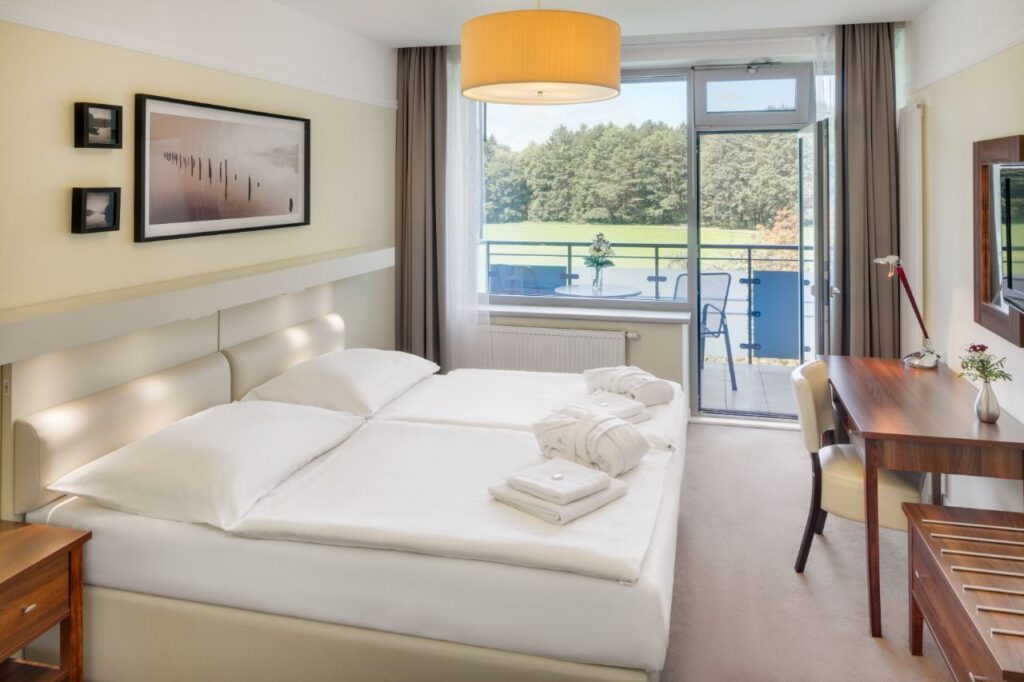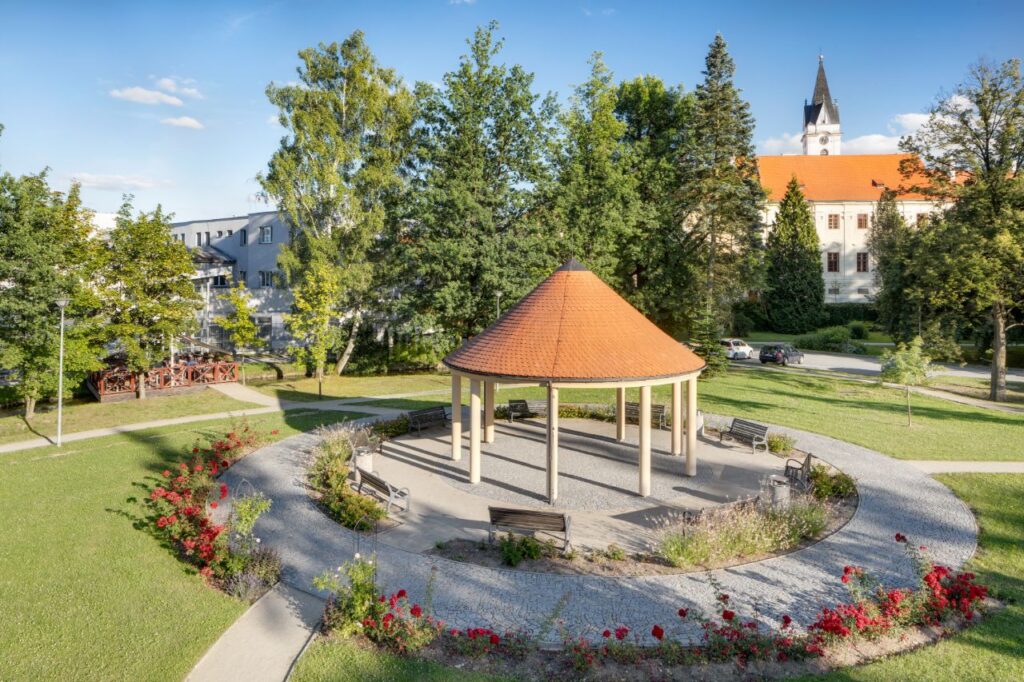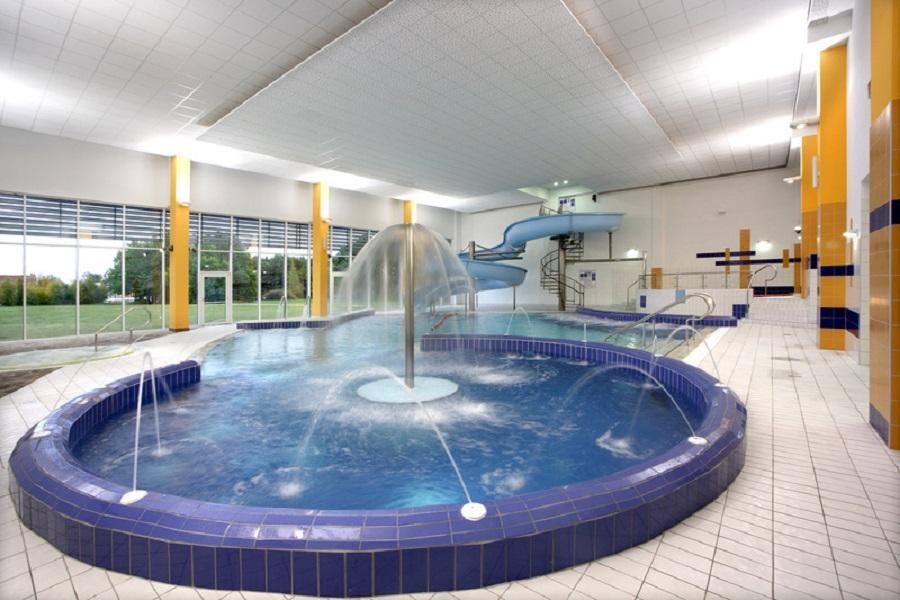The Třeboň Basin is one of the richest deposits of peat and bog in our country. Peat belongs to the so-called peloids, which are natural substances created by geological processes. Peat has beneficial effects on the human body and its properties have been used in spas for many years. It is on this natural resource that the local spa tradition is based. Due to its density, peat conducts heat up to seven times slower than water. The organism then warms up gently and intensively. Before use, coarse impurities are removed from the peat, crushed into small particles, water is added and finally heated to a temperature of 37-39 degrees Celsius. The prepared mass is used for the preparation of a peat bath or peat wrap, which has a positive effect especially in the treatment of diseases of the musculoskeletal system. The healing effects of your stay in the spa are enhanced by the quality of the surrounding natural environment of the Třeboň region. The tradition of spas dates back to the Middle Ages. Already in the 15th century, the spa in the town was cleansing with the hairdresser in one person. However, they had nothing to do with the peat at the time.
The first newer spas in Třeboň were built by the pond fisherman Václav Horák. They were not very important, but they were a model for the creation of the real first Třeboň spa. The modern tradition using the properties of a natural resource – peat – is associated primarily with the teacher, burgher and mover of social life Václav Huck. In May 1883, he opened a new spa near Zlatá stoka. He was allegedly brought to the idea by his daughter Berta, who was inspired by his stay in West Bohemian spa towns. The older of the two spa houses in Třeboň still bears her name – Bertiny lázně. After the Huck family, their niece Rosalie Vlčková became the owner of the spa at the end of 1909. In 1939 she sold them to the town of Třeboň. The first town in Třeboň Spa was opened with great glory on June 30, 1940. There were 46 beds in it, and medical care was provided at a professional level. From 1941, the spa building served as a hostel for evacuated German children. At the end of the Second World War, an infirmary for Hungarian soldiers was established in the spa building, and after the liberation in 1945, the facility served as an infirmary for the Soviet army. The spa operation was resumed in 1946. The spa was managed by Czechoslovakia. state spa and springs in Prague. K 1.1. In 1957, the spa organization of the Czechoslovak State Spa Třeboň was created by the Czechoslovak. State Spa Třeboň, Čsl. state spas Bechyně and Čsl. state spa Vráž u Písku. In 1960, the town of Třeboň received spa status. The spa was managed by Czechoslovakia. state spa and springs in Prague. K 1.1. In 1957, the spa organization of the Czechoslovak State Spa Třeboň was created by the Czechoslovak. State Spa Třeboň, Čsl. state spas Bechyně and Čsl. state spa Vráž u Písku. In 1960, the town of Třeboň received spa status. The spa was managed by Czechoslovakia. state spa and springs in Prague. K 1.1. In 1957, the spa organization of the Czechoslovak State Spa Třeboň was created by the Czechoslovak. State Spa Třeboň, Čsl. state spas Bechyně and Čsl. state spa Vráž u Písku. In 1960, the town of Třeboň received spa status.
An important moment of development was the construction of the Aurora spa sanatorium, which was put into operation on November 7. 1975.
After 1989, Bertiny lázně returned to the town’s property. There was an extensive reconstruction, expansion of accommodation capacity and treatment facilities of these spas. After 1989, the Aurora Spa Sanatorium remained a state-owned facility called Státní léčebné lázně, sp Nine years later it became the property of the city under the brand name Lázně Aurora, sro Similar to the Berta Spa, there were large investment projects. One of the largest investments was the construction of a wellness center and a major modernization of the swimming pool, completed in 2006. At the turn of 2011/12, the most extensive reconstruction of accommodation capacity took place. A total of 276 rooms were converted. Bed capacity has increased to 564 beds. Rooms in building A are today at the level of a four-star hotel, building B offers three-star accommodation. The new architectural dominant of the spa is a monolithic reinforced concrete fire escape with a glass shaft of an observation lift, which goes up to a height of 24.85 m. As of January 1, 2017, the spa is a company based on the merger – Slatinné lázně Treboň sro – which includes two spa houses: Bertiny lázně and Lázně Aurora.

